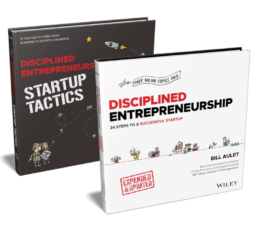Republished from Xconomy.
I just returned to Kendall Square after spending a spectacular weekend at Squam Lake in New Hampshire and at the forefront of my mind—and what I could not shake over the weekend—is the state of the development of the New England energy ecosystem. Granted, I have a personal agenda, as in 30 days I commence teaching a new class at MIT called Energy Ventures. Still, it’s an extremely relevant question for the local economy, and arguably the nation and the world. Energy is, after all, the biggest industry on the planet and certainly faces the biggest challenges. Therefore, it offers the biggest and most attractive opportunities for investors and others who want to make a difference.
A lot of smart and well-intentioned people have made a lot of progress in recent years in developing the regional energy ecosystem. But let’s not congratulate ourselves too fast. For every EnerNoc success story, there has been a GreenFuel setback (hopefully temporary). Not that such setbacks are necessarily a bad thing, especially if they cause us to reflect and learn how to improve. So the question that we should seek to answer is “what is working and what is not working in developing a New England-based energy ecosystem?” Or even more specifically, “what’s wrong with energy investing?”
To answer this question, we might refer to the Beatles’ George Harrison, who sang in “Got My Mind Set on You” that “it’s gonna take time, a whole lot of precious time…to do it right.” But the time is precious indeed, and I think enough results are in to make two important points about energy investing.
Majoring in Minors
While there clearly used to be a shortage of private equity capital for energy ventures (and rightly so because of their highly cyclic nature), that problem has gone away. Money is now gushing in. By my simple calculations, the amount of money available to energy ventures from dedicated private-equity funds quadrupled from 2005 to 2006, soaring from approximately $5B to $20B. I believe this is even understated. The point is that the money is flowing in at an amazing rate. But where is it going? Energy as a sector is almost as non-specific as technology or transportation. We have to peel back the label and take a closer look.
The lion’s share of the money that is dedicated to energy is earmarked for renewable or alternative energy. Renewable or alternative energy is a fantastic thing and it is necessary, but wholly insufficient, to deal with the energy problem. The biggest part of the energy riddle that needs to be solved resides—and will continue to reside for the next 50 years—with the hydrocarbon side. How do we find more to meet the booming demand? And, how do we find ways, through technology, process, and/or business-model innovation, to reduce the environmental impact of hydrocarbon usage? Renewables is a rounding error when compared to the 80 to 90 percent of the demand that hydrocarbons (i.e., oil, gas, coal—ah!, there it is the four-letter word of energy) fill and will continue to fill for the foreseeable future.
We should and must invest in renewables and alternative energy for the future and there will be some big wins there relative to investing. But with all the new money and attention rushing into this small part of the sector, we are majoring in minors. The major focus should be how do we deal with the continued need for hydrocarbons and how do we make this cleaner energy. Just to put this in perspective, the world would be dramatically better off from an energy-supply standpoint if we could find a way to improve recovery rates at oil and gas wells by 1 percent than if we built a million new wind turbines. If we could find a way to reduce CO2 emissions from automobiles by 1 percent it would be, from a quantitative and practical point of view, thousands of times more positively impactful than increasing solar energy production by a hundred times.
For the investor, this line of thought would seem to make sense as well. One of the top funds of any kind in the U.S. last year was First Reserve Corporation, and while they do not release their results, we know they did very well. One gauge is that they were the top fee producer on Wall Street last year. They also just raised an additional $7.8 billion to continue to do what they do best—investing in the basic energy industry with a focus on making the good old hydrocarbons industry more effective and efficient. These days the herd mentality of private-equity investors, in my humble opinion, has them putting too much money into renewable/alternative energies and not enough into fixing the core business of energy, the hydrocarbons. There will be a correction but until such time, I think this is a fundamental problem with overall energy investing.
Not Enough of the New Brand of Innovators/Entrepreneurs
The nature of the energy industry is far different from that seen in IT, healthcare, biotech, telecommunication, or any other field and it requires a new brand of innovator/entrepreneur which is in short supply relative to demand. The lessons from other industries do not translate effectively in many cases. The scope, scale, time horizon, interdisciplinary skills required, and the question of how independent a new venture can be from the existing infrastructure are problems that, in combination, are unique to the energy industry. But more on that in the next post…
The author
Bill Aulet
A longtime successful entrepreneur, Bill is the Managing Director of the Martin Trust Center for MIT Entrepreneurship and Professor of the Practice at the MIT Sloan School of Management. He is changing the way entrepreneurship is understood, taught, and practiced around the world.

The Disciplined Entrepreneurship Toolbox
Stay ahead by using the 24 steps together with your team, mentors, and investors.
The books
This methodology with 24 steps and 15 tactics was created at MIT to help you translate your technology or idea into innovative new products. The books were designed for first-time and repeat entrepreneurs so that they can build great ventures.

How relevant was this article to you?
Click on a star to rate it!
Average rating 4.7 / 5. Vote count: 3
No votes so far! Be the first to rate this post.
We are sorry that this article was not useful for you!
Let us improve this post!
Tell us how we can improve this post?
